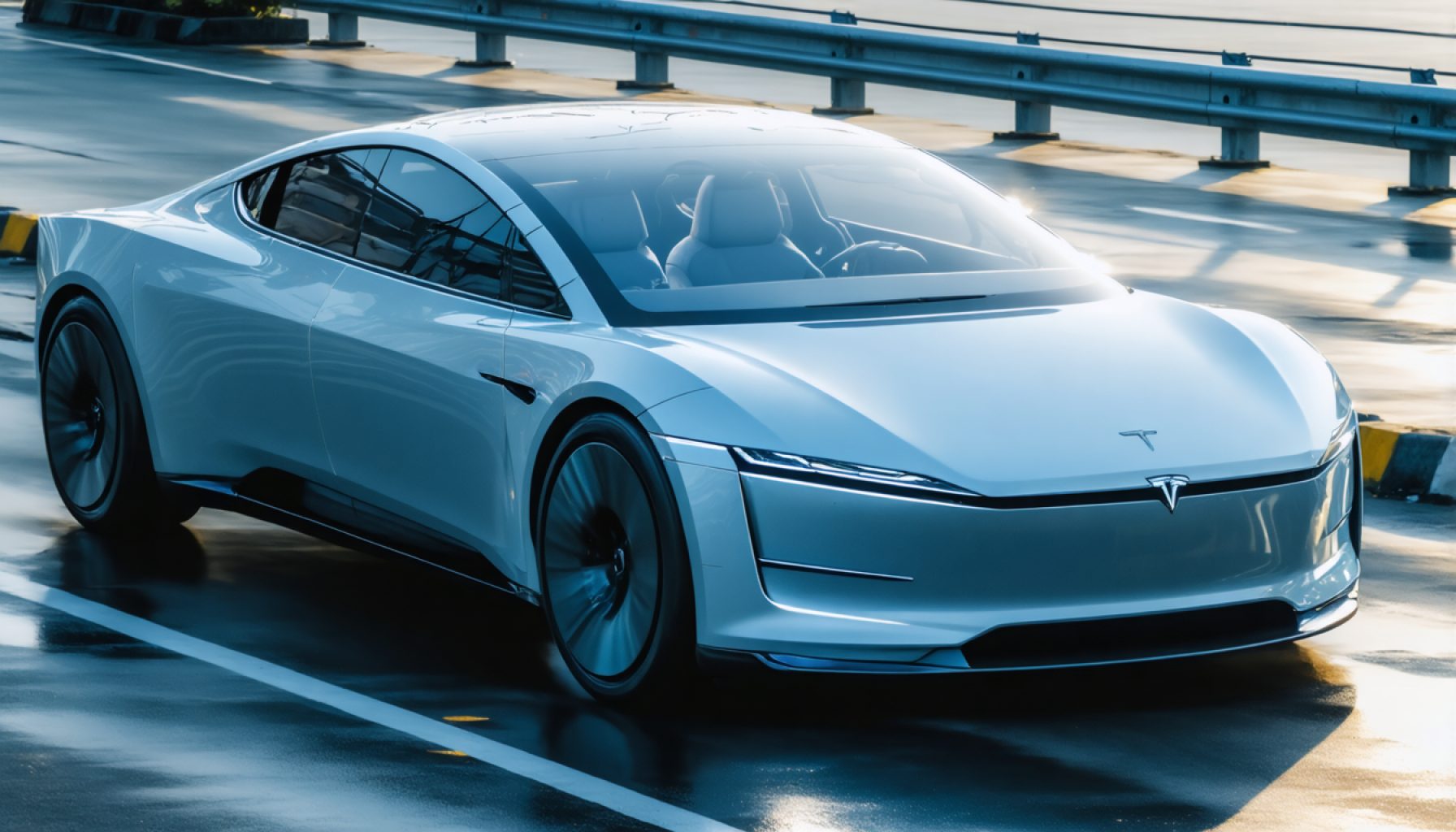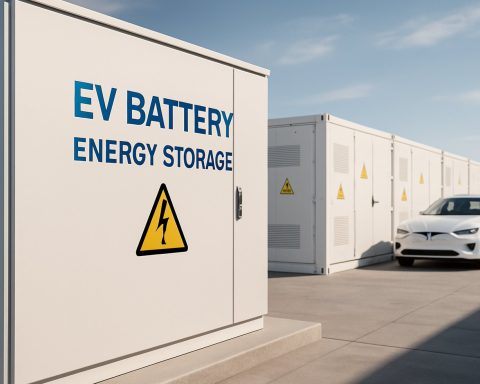- BYD is a leading force in the global electric vehicle market, driven by relentless innovation and strategic foresight.
- Founded by Wang Chuanfu in 1995, BYD transitioned from battery production to automaking by acquiring Tsinchuan Automobile Company in 2003, creating BYD Auto.
- The company’s name, BYD, stands for “Build Your Dreams,” reflecting its ethos of perseverance and ambition.
- Heavyweight investors, including Warren Buffett’s Berkshire Hathaway, back BYD, highlighting its potential to revolutionize automotive paradigms.
- BYD’s electric vehicles, like the Yangwang U9, integrate innovative features that may reshape road safety and driving experiences globally.
- Despite industry skepticism, BYD has successfully made EVs more accessible by overcoming significant cost barriers, challenging market leaders like Tesla.
- BYD’s diverse ventures into renewable energy, electronics, and railways reinforce its commitment to a green technological future.
An electric revolution hums across highways worldwide, reshaping the future of transport while vying to conquer one of the biggest speed bumps: cost. Among the contenders electrifying this race, one company shines with relentless innovation and strategic foresight: the Chinese automotive brand, BYD.
Founded by Wang Chuanfu in 1995, BYD initially set its sights on dominating the Japanese rechargeable battery industry—a mission it swiftly and successfully accomplished, vaulting to the top ranks of global battery manufacturers. But Wang’s ambitions were far from being capped at battery production; he envisioned a future where his company wouldn’t just ride the electric wave but steer it.
This imperative drove BYD’s acquisition of Tsinchuan Automobile Company in 2003 and the subsequent birth of BYD Auto, breathing life into the next generation of electric and hybrid vehicles. Chuanfu’s vision attracted heavyweight investors such as Warren Buffett’s Berkshire Hathaway and BlackRock, endorsing a commitment to revolutionize automotive paradigms.
While BYD’s ascension in the EV battery market is impressive, equaled only by its compatriot titans like CATL, it’s the meaning behind those three letters, B.Y.D., that encapsulates Wang Chuanfu’s venture in more than mere syllables. “Build Your Dreams”—a fitting ethos for a brand that not only survived but flourished from humble beginnings.
Wang’s journey from orphan to industry magnate epitomizes perseverance. His unyielding drive has seen BYD foray into diverse sectors: renewable energy, electronics, and even railways, diversifying its portfolio while reinforcing its position in the green technology arena.
Despite industry skepticism, most notably from Tesla’s Elon Musk, BYD has persistently chipped away at cost barriers. The year 2025 marked a zenith in its overseas sales, overshadowing Tesla’s efforts with affordable EV models like the Model 3. The exceptional features of BYD’s vehicles, such as the Yangwang U9’s ability to drive even on three wheels, foreshadow a potential reshaping of road safety standards and driving experiences the world over.
The true narrative here isn’t just about innovative vehicle technology or high-stakes market competition. It is the power of a dream driven to reality through relentless pursuit and strategic maneuvering. With every battery it builds, every vehicle it rolls out, BYD continues to craft the blueprint for a sustainable future.
The road ahead for electric vehicles is paved with challenges, but BYD’s story illuminates a key driving force: dreams, when paired with dedication and innovation, have the potential to not only transform industries but also redefine the future of mobility.
Why BYD is Poised to Lead the Future of Electric Mobility
The Rise of BYD: More Than Just Electric Vehicles
BYD, founded by Wang Chuanfu in 1995, has grown exponentially from its origins as a battery manufacturer into a global leader in the electric vehicle (EV) market. The company’s “Build Your Dreams” ethos is not just a slogan but a guiding principle that has helped it expand into various sectors such as renewable energy, electronics, and urban rail transit, making it a formidable player in green technology.
How BYD is Disrupting the Electric Vehicle Market
1. Innovative Battery Technology: BYD began its journey in the battery industry, quickly becoming a global leader. Its expertise in battery technology, particularly lithium-ion phosphate (LFP) batteries, offers a more cost-effective and safer alternative to nickel-manganese-cobalt (NMC) batteries, which are commonly used in today’s EVs.
2. Strategic Investments and Partnerships: BYD has attracted substantial investment from industry leaders like Warren Buffett’s Berkshire Hathaway, cementing its reputation for innovation and sustainability. Collaborations with companies such as Toyota and partnerships in Europe and Latin America further amplify its reach and influence.
3. Affordable and Diverse Vehicle Lineup: With models ranging from compact cars to luxury sedans and buses, BYD provides various options to cater to different markets. Their competitively priced models, like the Dolphin and Tang, are designed to be accessible globally, challenging established players like Tesla on affordability.
4. Advanced Technological Features: BYD’s vehicles boast cutting-edge features, including the Blade Battery, which sets new benchmarks in safety and longevity. The Yangwang U9’s remarkable stability, even when driven on three wheels, showcases BYD’s commitment to innovation and safety.
5. Sustainability Efforts: As part of its green mobility strategy, BYD focuses on reducing carbon emissions through the integration of photovoltaic systems, energy storage, and electric transportation. This holistic approach aims to create a sustainable ecosystem for future urban environments.
Pros and Cons of BYD Vehicles
Pros:
– Advanced Battery Technology: Safer and longer-lasting batteries enhance vehicle reliability.
– Affordable Pricing: Offers a better entry point into the EV market for consumers.
– Robust Safety Features: Innovations like all-wheel-drive systems provide superior road safety.
– Diverse Model Range: Provides options for a wide audience, from budget-conscious buyers to luxury enthusiasts.
Cons:
– Brand Recognition: Still gaining recognition outside of Asia, especially in Western markets.
– Charging Infrastructure: Though improving, global infrastructure supporting EVs needs more development to meet growing demand.
Market Forecasts & Industry Trends
– EV Adoption Growth: According to a BloombergNEF report, by 2040, EVs are projected to comprise 50% of new car sales globally. BYD is well-positioned to capture significant market share, thanks to its competitive pricing and strong product lineup.
– Global Expansion Efforts: BYD continues to enhance its presence in Europe, North America, and Africa through strategic partnerships and localized production facilities.
Actionable Recommendations
– Consider Battery and Vehicle Technology: When buying an EV, opt for models with the latest battery technology for enhanced performance and safety.
– Explore Government Incentives: Many governments offer tax benefits or rebates for purchasing electric vehicles. Researching these can lead to substantial savings.
– Plan for Infrastructure Needs: Consider the charging infrastructure in your area; ensure easy access to charging stations.
Insights & Predictions
With BYD’s continuous push in technological advancement and strategic market penetration, its potential to dominate the EV market seems promising. The company’s focus on affordable EVs, safety innovations, and sustainable development aligns well with future needs. By working towards overcoming present challenges, such as expanding its brand influence and infrastructural support, BYD stands as a strong contender in the race for electrifying the future of mobility.
Don’t miss more revolutionary automotive insights at BYD.
BYD’s commitment to dreams, innovation, and sustainability illustrates a blueprint that other companies might follow to transform and enrich the landscape of electric mobility.











